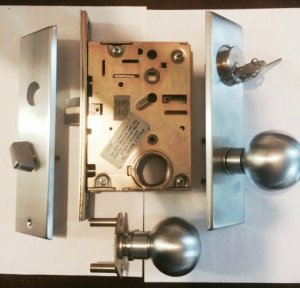Hgh-Security Grade 1 Locks
Security locks: guidelines for choosing the most appropriate

Security locks are significant to ensure safety on different surfaces. Not only are they useful systems in homes or premises, but they are also essential mechanisms for the operation of various equipment such as safes, supermarket carts, lockers, etc.
Depending on the device in which it is to be used, one type of high-security grade-1 locks or another will be necessary. In the following article, we discover the different typologies that exist and how to choose the most appropriate one.
Types of security locks:
To choose the appropriate security lock, the most important thing is to identify the specific need of the device or place where it will be implemented. The same type of lock is not required for a door as for a safe. It is also essential to take into account the material with which it is manufactured.
⦁ Cylindrical lock: They are the most common and are named after the cylindrical structure of the centerpiece with a pear cylinder. Of this type, there is high security with anti-dumping, anti-extraction, anti-drill, and anti-drain cylinders, depending on the needs.
⦁ Embedded or inlay locks: These locks have a device in the handle to open from the inside that rotates the latch. Traditionally, they have been installed in bathroom doors and inside homes to isolate some areas from others and be able to open from the inside.
⦁ Tubular locks: They are usually installed in places or areas of the home with the same features as the built-in. The difference is that they can be opened or closed from the inside by pressing a button — ideal for bathrooms, rooms, or offices that we want to close from the inside.
⦁ Multipoint locks: This type of locks is the most used in central doors to access homes because of its high level of protection. They are highly safe and, of course, the most difficult to force.
⦁ Electronic or digital locks: These are similar to those of hotels and are available in various types and models: by alphanumeric code, by fingerprint, by mobile phone and an app, by Bluetooth, etc. This type is also known as a smart lock.
⦁ Recessed locks: This type of locks are embedded inside the door and its lock on the inner side of the door frame. Most of them are reversible; that is, they serve both doors that open on the left and those that open on the right. To replace a recessed lock with another without altering the door, be sure to take the measurements of the hole very well and that the distances of the holes for the handle and the cylinder on the door plate coincide.
⦁ Only with slip: When the door is closed, it is only secured by the latch. On the inside, it always opens only with a handle, and on the outside, it can be opened with a quarter turn or with a handle, as in the case of some gate doors. It must be borne in mind that if it is opened with a handle on the outside, the security is void. This type of lock is usually complemented by other security features, such as locks.
Recommendations for choosing the best security lock:
To select the best security lock, the quality of the materials used in these must be taken into account. You can opt for locks made of iron, nickel, or stainless steel.
Apart from the material, it is necessary to choose a security lock that incorporates an additional prevention method against bumping. Bumping is one of the most commonly used techniques to force the bolt. It consists of introducing a manipulated key into the lock cylinder and hitting it in order to “dance” the pistons of the same.
With this, what is achieved is that the pistons of the cylinder jump simultaneously when the key is struck, allowing the rotation of this and, therefore, the opening of the security door. To avoid this technique, it is best to use a lock with the anti-bumping mechanism.
Despite choosing the best security lock, over time, these always suffer from wear and tear that ends up causing malfunctions. Therefore, it is crucial to know the main failures to be able to remedy them as soon as possible.
